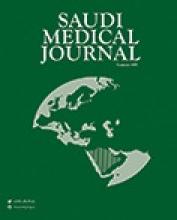Abstract
OBJECTIVE: Prostate cancer (PRCa) is one of the most common causes of cancer death in men and determinants of PRCa risk remain largely unidentified. Benign prostatic hyperplasia (BPH) is found in the majority of ageing men and has been associated with PRCa. Many candidate genes have been suggested to be involved in PRCa, such as those that are central to cellular growth and differentiation in the prostate gland. The vitamin D receptor (VDR) and HER-2 protooncogene have been shown to be involved in the regulation of cell proliferation and differentiation in prostate cells. Genetic variations of these genes could be useful to detect BPH patients that have a higher risk of developing PRCa. This study used a case-control design to assess the predictive value of 3 polymorphisms in VDR (TaqI and FokI) and HER-2 (Val655Ile) to determine the risk of developing PRCa in patients with BPH.
METHODS: Polymorphisms were detected by RFLP analysis. The study evaluated 28 patients who presented with PRCa at least 6 years after the diagnosis of BPH and 56 matched patients with BPH who did not progress to PRCa over a comparable period. The study was carried out in University of Aberdeen, Foresterhill, Aberdeen, United Kingdom in the year 2002.
RESULTS: Among the case group, 89% had a TT TaqI genotype, whereas 57% of control had this genotype (odds ratio [OR] = 5.16, 95% confidence interval [CI] = 1.46-18.22). A similar pattern was seen for the FokI genotype, although this was not statistically significant (OR = 2.33, 95% CI = 0.86-6.29). The frequency of the HER-2 Ile/Ile genotype was higher in cases (79%) compared to control subjects (66%), although this was not statistically significant (OR = 1.94, 95% CI = 0.67-5.63).
CONCLUSION: This study shows that the VDR TaqI polymorphism is associated with a group of men with BPH who are at an increase risk of PRCa, providing a potential tool to assist prediction strategies for this important disease.
- Copyright: © Saudi Medical Journal
This is an open-access article distributed under the terms of the Creative Commons Attribution-Noncommercial-Share Alike 3.0 Unported, which permits unrestricted use, distribution, and reproduction in any medium, provided the original work is properly cited.






